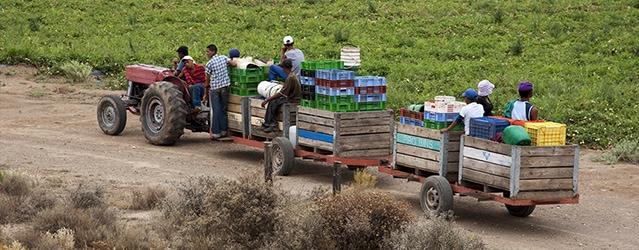With a wealth of cultivable land, Africa seeks to develop agriculture.

Back To Supplement
In the two years since prices for oil and industrial metals fell into the doldrums, many governments across Africa prioritized agriculture to diversify away from extractive industries and provide much-needed employment.
Given that most sub-Saharan nations are net importers of food, the urgency has only risen as devalued local currencies make imports more expensive. Some countries, like Nigeria, attempt import substitution. Others seek to increase output by attracting foreign direct investment and technology.Amadou Sy, who leads the Africa Growth Initiative at The Brookings Institution, argues that agricultural efficiency is key. “the actual yield of cultivated land is currently only 25% of the potential,” he says, arguing for more-ffective investment—public and private—in infrastructure such as irrigation and electricity.
Yet over the past two decades most FDI has gone into large-scale projects involving huge tracts of cultivable land. Saudi Star put more than $200 million into an Ethiopian farm the size of 20,000 soccer fields. Overall, Ethiopia has leased 2.5 million hectares—an area almost as big as Belgium—to outside investors. Sometimes portrayed as a land grab or even as the re-colonization of Africa, FDI in agriculture has been controversial, with the Chinese, South Koreans and Gulf Arabs seen as particularly problematic.
That’s probably not fair. “In reality European, US and Southeast Asian companies have been the more significant land acquirers in sub-Saharan Africa,” says Lorenzo Cotula, principal researcher in sustainable development at the International Institute for Environment and Development. Plus, “the role of national elites as land acquirers or [investment] partners has been overlooked,” he adds. Cotula points out that while food security is cited as a major impetus for these deals, “agro-industrial crops like rubber and flexible crops like palm oil and sugar accounted for a major share”
Only a minority of those projects have prospered. “Many failed because the difficulties of establishing very large plantations in remote regions were underestimated,” says Cotula. “A significant amount of land acquired is not still producing.” The commodity slump also changed the viability of such projects. Prices of agricultural commodities—with the notable exception of cocoa—are in a tailspin. Still, Cotula says, “pressures on valuable lands are expected to grow in the longer term.”
Sy notes that import substitution opens a way for co-investors alongside government to negotiate special terms for their product in the domestic market, and that big agricultural projects raise questions of corruption and overriding local peoples’ rights. “Concerns over social and environmental impacts have prompted international guidelines,” Cotula notes, “but imbalances in legal frameworks still expose many rural people to the risk of dispossession.”
A third way of investing in the sector is for a large buyer to enter into agreements with multiple smallholders. “Domestic financing of agriculture should be a priority,” says Sy, “but the banks still focus on exporting crops, where they can issue letters of credit and earn fees, rather than financing actual production, where there are risks from the weather.”



